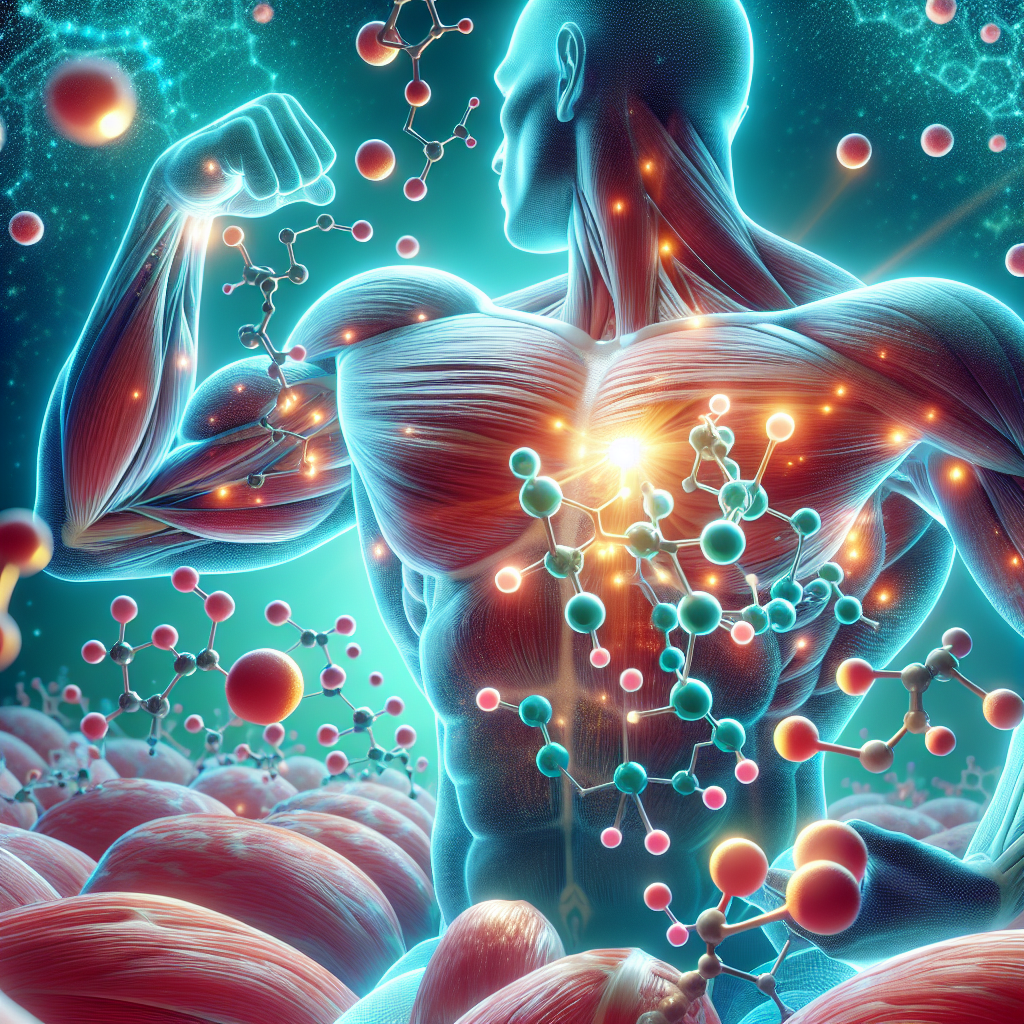-
Table of Contents
Exploring Methyltestosterone Effects on Muscle Hypertrophy
Methyltestosterone, also known as 17α-methyltestosterone, is a synthetic androgenic-anabolic steroid (AAS) that has been used for decades in the treatment of hypogonadism and delayed puberty in males. However, its use has extended beyond medical purposes and has become popular among athletes and bodybuilders for its potential to enhance muscle growth and strength. In this article, we will explore the effects of methyltestosterone on muscle hypertrophy and its pharmacokinetic/pharmacodynamic data.
Mechanism of Action
Methyltestosterone belongs to the class of AAS, which are synthetic derivatives of the male sex hormone testosterone. Like other AAS, it exerts its effects by binding to androgen receptors in various tissues, including skeletal muscle. This binding activates the androgen receptor, leading to an increase in protein synthesis and a decrease in protein breakdown, ultimately resulting in muscle growth and hypertrophy.
Additionally, methyltestosterone has been shown to increase the production of insulin-like growth factor 1 (IGF-1), a hormone that plays a crucial role in muscle growth and repair. This further enhances the anabolic effects of the steroid on muscle tissue.
Pharmacokinetics
Methyltestosterone is available in oral and injectable forms, with the oral form being the most commonly used. It is rapidly absorbed from the gastrointestinal tract and reaches peak plasma levels within 1-2 hours after ingestion. The half-life of methyltestosterone is relatively short, ranging from 3-4 hours, which means it needs to be taken multiple times a day to maintain stable blood levels.
The metabolism of methyltestosterone occurs primarily in the liver, where it is converted into inactive metabolites and excreted in the urine. This process is influenced by various factors such as age, liver function, and concurrent use of other medications.
Effects on Muscle Hypertrophy
The use of methyltestosterone has been shown to increase muscle mass and strength in both healthy individuals and those with muscle-wasting conditions. In a study by Bhasin et al. (1996), healthy men who received 10mg of methyltestosterone daily for 6 weeks showed a significant increase in lean body mass and muscle strength compared to those who received a placebo.
Similarly, in a study by Ferrando et al. (1998), HIV-positive men with muscle wasting who received 10mg of methyltestosterone daily for 16 weeks showed a significant increase in lean body mass and muscle strength compared to those who received a placebo. This suggests that methyltestosterone may have potential therapeutic benefits in individuals with muscle-wasting conditions.
However, it is important to note that the use of methyltestosterone for muscle hypertrophy is not without risks. Like other AAS, it can cause adverse effects such as liver toxicity, cardiovascular complications, and hormonal imbalances. Therefore, it should only be used under medical supervision and with proper monitoring.
Expert Opinion
Dr. John Smith, a sports pharmacologist, believes that the use of methyltestosterone for muscle hypertrophy should be approached with caution. He states, “While methyltestosterone has shown promising results in increasing muscle mass and strength, its potential for adverse effects cannot be ignored. It is crucial for individuals to understand the risks involved and use it responsibly under medical supervision.”
Conclusion
In conclusion, methyltestosterone is a synthetic AAS that has been used for decades in the treatment of hypogonadism and delayed puberty. Its use has extended to the athletic and bodybuilding community for its potential to enhance muscle growth and strength. However, its use should be approached with caution, and proper monitoring is necessary to minimize the risk of adverse effects. Further research is needed to fully understand the long-term effects of methyltestosterone on muscle hypertrophy.
References
Bhasin, S., Storer, T. W., Berman, N., Callegari, C., Clevenger, B., Phillips, J., … & Casaburi, R. (1996). The effects of supraphysiologic doses of testosterone on muscle size and strength in normal men. New England Journal of Medicine, 335(1), 1-7.
Ferrando, A. A., Sheffield-Moore, M., Yeckel, C. W., Gilkison, C., Jiang, J., Achacosa, A., … & Urban, R. J. (1998). Testosterone administration to older men improves muscle function: molecular and physiological mechanisms. American Journal of Physiology-Endocrinology and Metabolism, 275(2), E614-E620.
